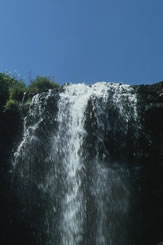 Train the operators to prevent pollution from point sources
Train the operators to prevent pollution from point sources
In past years, several small pilot projects have been carried out on water pollution from plant protection products (PPP), achieving reductions in PPP concentrations in some surface waters of over 90%. There has, however, been little or no coordination and exchange of experiences between these initiatives. Moreover, due to the small scale of their implementation, the methods developed are seldom directly transferable to the national or EU level.
TOPPS intends to create awareness on six main critical processes: storage & transport, the phase before, during and after spraying, and residue disposal management. It acts via a well-organised European network of partners to achieve its objective: identifying and disseminating advice, training and information at a larger co-ordinated scale in Europe with the intention of reducing of plant protection product spills into ground - and surface water.
Project webpage at DG ENV LIFE database.
| Project number | LIFE05 ENV/B/000510 | ||||||||||||||||
|---|---|---|---|---|---|---|---|---|---|---|---|---|---|---|---|---|---|
| Subject(s) | AGRICULTURE , INDUSTRY , METHTODOLOGY - STATISTICS - DECISION AID , NATURAL MEDIUM , PREVENTION AND NUISANCES POLLUTION | ||||||||||||||||
| Acronym | TOPPS | ||||||||||||||||
| Geographical coverage | Belgium, Denmark, France, Germany, United Kingdom, Italy, Spain, Poland, Slovakia, Finland | ||||||||||||||||
| Budget (in €) | 2603332 | ||||||||||||||||
| Programme | EU-LIFE | ||||||||||||||||
| Web site | ttp://www.topps-life.org | ||||||||||||||||
| Objectives |
- Best Management Practice for the safe use of Plant Protection Products; Further TOPPS objective are the implementation and dissemination of this strategy: In 5 selected TOPPS pilot catchment areas (Poland, Denmark, Germany, Italy, France-Belgium) in the EU farming community.
Through multi-stakeholder training and awareness-raising, the project
sought to attain a significant decrease in water pollution from PPP. It
would directly address PPP-users (mainly farmers), but also train key
‘PPP-intermediaries’ (distributors, advisors or agricultural schools,
etc.), who would, in turn, inform PPP-users on the prevention of
pollution from point sources.
|
||||||||||||||||
| Results | Best Management Practices (BMP)
have been finalized, as a key deliverable of the project. The aim was
to agree on practical solutions and recommendations to reduce point
source losses of plant protection products to water. A consolidated
version, representing and including the feedback of all EU Member
States, had been presented at the European Stakeholder workshop. These
BMPs relate to all relevant process steps such as transport, storage,
handling and filling, spraying, cleaning, and the disposal of remnant
spray solution. For each of the processes key statements were developed
which describe "what to do". For each "what to do" the "how to do" has
been specified, considering regional characteristics in terms of
regulations. Eleven demonstration farms have been set up to provide trainings to advisers and operators, the target audience for TOPPS. In addition, three demonstration trailers have been finalized and transferred to various regions. These trailers will be used on field days and farm shows. Leaflets, various training materials, checklists and publications on TOPPS have been produced. These checklists can be used by farmers to audit their practice. Generic training material adapted to local languages and conditions have been generated by the TOPPS partners. An Internet based database is continuously updated with newest and relevant documents. The member's part of the website contains about 1400 nominated experts, of which around 100 feed and use the TOPPS knowledge platform, as well as 1300 TOPPS relevant organizations. Audits on awareness and behavior, on techniques and infrastructure have been finalized. They were conducted to form the basis for the "up scaling" process of BMP dissemination and for training activities. These audits revealed regional differences in terms of legislation, agricultural practices, climatic conditions, and awareness. These audits confirmed the need for trainings and advice on the prevention of point sources.
The TOPPS project was successful in achieving its objectives, to
develop common European best management practices’(BMP) guidelines and
to promote the BMP principals (through advice, training, and
demonstrations) towards preventing point source pollution to water.
|
||||||||||||||||
| Period | [01/11/2005 - 31/10/2008] | ||||||||||||||||
 you are not logged in
you are not logged in





